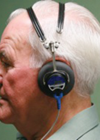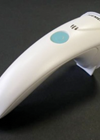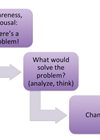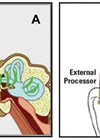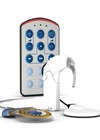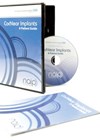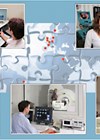Audiology features
Why screen for hearing loss in adults?
Introduction Hearing loss affects over 10 million people in the UK – one in six of the population. Of over 50-year-olds 41.7% are estimated to have some form of hearing loss. This rises to 71.1% of over 70-year-olds, over half...
Adult hearing screening: consideration for a holistic model
Background Adult-onset hearing impairment is a highly prevalent and undertreated chronic problem that poses a significant burden of disease worldwide [1]. It is usually gradual and diagnosed and managed approximately 10 years after adults have first experienced hearing difficulties [2]....
Screening for hearing loss in primary care
Hearing impairment is one physical disability that is increasing in prevalence in society in general, and in older adults in particular. Approximately 34 to 36 million Americans report suffering from some degree of hearing impairment with the number rising to...
Screening for hearing aid fittings – an approach for primary care
Introduction The communication difficulties related to hearing loss can lead to ‘depression, social withdrawal and problems with employment and access to information sources’ [1]. Furthermore, unmanaged hearing loss is associated with dementia, a poorer quality of life, depression, anxiety and...
Adult hearing screenings has counselling opportunities
Adult hearing screening has its challenges, particularly time constraints. Because the process itself is brief, we could efficiently screen dozens of adults per hour; at events such as health fairs, it’s tempting to march people through screenings as quickly as...
Semi implantable bone conduction devices: challenges and developments
Bone conduction mechanisms and history of bone conduction aids Bone conduction hearing devices work by stimulating hair cells via the bone conduction hearing pathways. These pathways are less well understood than the air conduction pathways, but recent research has shown...
2014: Are today’s implantable devices better than conventional solutions for patients with conductive or mixed hearing loss?
Patients with conductive or mixed hearing loss become candidates for amplification when reconstructive surgery is not viable. Three common amplification options are conventional acoustic devices, such as behind-the-ear devices (BTEs), (implantable) bone-conduction devices and active middle ear implants. The goal...
Auditory brainstem implant results in adults and children
Background The auditory brainstem implant (ABI) has been developed from cochlear implant (CI) technology and is indicated for people who have anatomical abnormalities of the cochlea or dysfunction of the auditory nerve. The majority of people who have received an...
Music and cochlear implants
Introduction The introduction of multichannel cochlear implants (CIs) in the early 1980s provided children and adults with severe and profound hearing losses with greatly improved speech perception skills. In this paper, however, I am going to focus on an area...
Access to and uptake of cochlear implants in the UK
Assessing demands on cochlear implant (CI) services is very important for both commissioners and clinicians in anticipating clinical need and funding requirements. Commercial CI’s were introduced in the late 1980s. Initial funding was from charitable sources. The first major advance...
Cochlear implant referral: how can we do better?
Considerable progress has been made over the last few years in improving access to cochlear implantation (CI) in the UK for children and adults with severe to profound deafness. But we are still not treating children early enough, and we...
European funding for the tinnitus research network TINNET
Over 70 million people in Europe experience tinnitus, and for seven million it creates a debilitating condition. Severe tinnitus is often associated with depression, anxiety and insomnia, resulting in an enormous socio-economic impact [1]. It has been estimated that 13...


